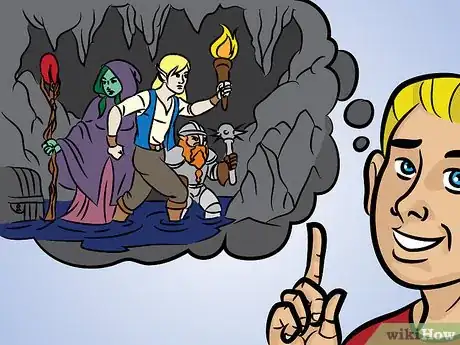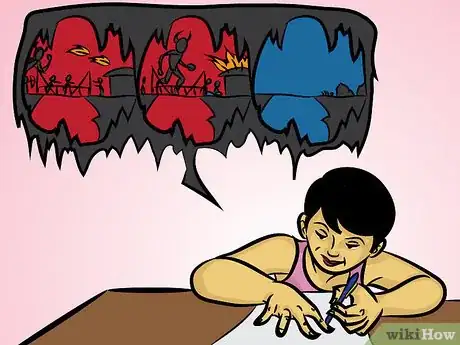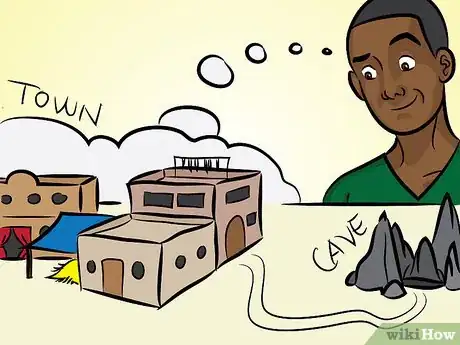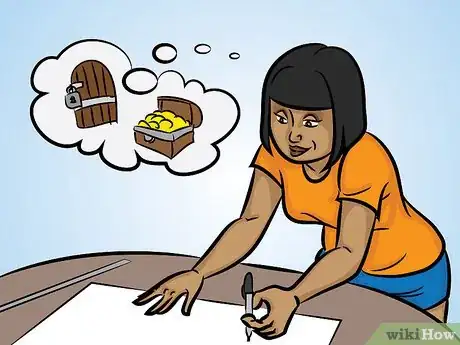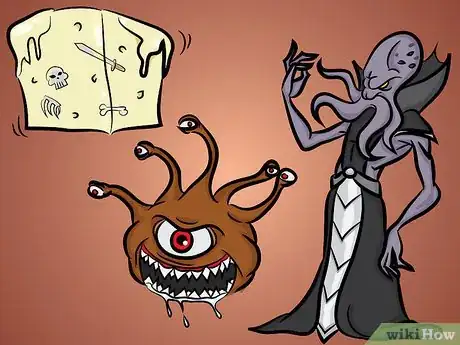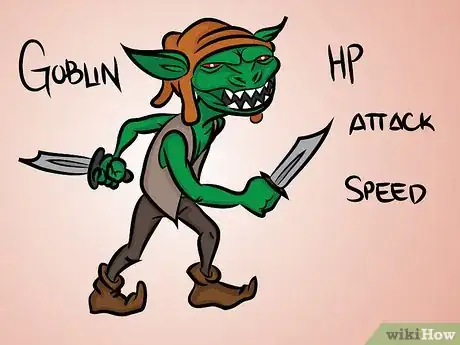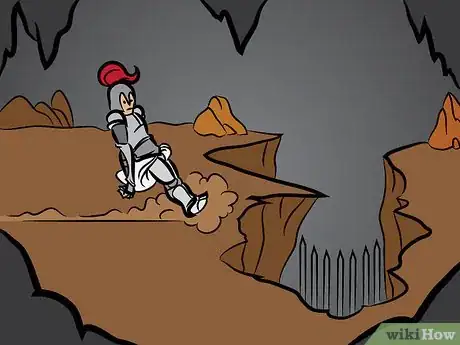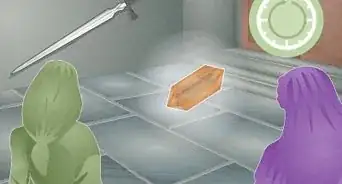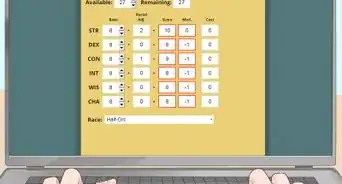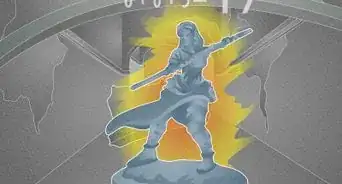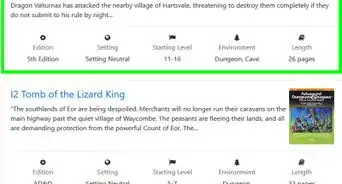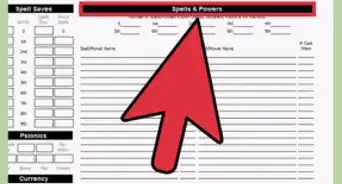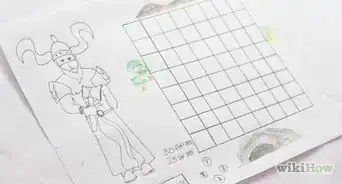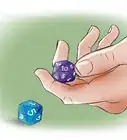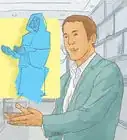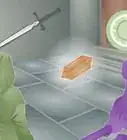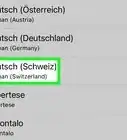X
wikiHow is a “wiki,” similar to Wikipedia, which means that many of our articles are co-written by multiple authors. To create this article, 17 people, some anonymous, worked to edit and improve it over time.
This article has been viewed 157,978 times.
Learn more...
Everyone will end up being a DM (in Dungeons and Dragons) sooner or later. Therefore, you should know how to create a good dungeon. You also might have just started being a DM and your previous dungeons might not have worked well. If any of the above are true, this is the article for you!
Steps
-
1Know your campaign setting - is it Forgotten Realms™? Is it Eberron™? Is it Greyhawk™? Or is it even a campaign setting that you thought up yourself? Well, whatever it may be, be sure you are aware of where the PC's are starting out, what the climate and overall environment in that area is, and most of all, what level they are! Being a DM, you should know these kind of things right off the bat, so you don't have to worry about doing incredible research to learn them.
-
2Think of a rough idea of what you want this dungeon to be like. Some examples might be an underwater adventure where they must learn the secret to where the Wand of Orcus is, an extermination mission where they venture into the city's sewer system to wipe out the thieves' guild there, or a flat-out dungeon crawl. Try the dungeon crawl for beginners because it requires little story or role-playing on your part (assuming that handling NPCs will be challenging for you in the beginning stages of DMdom). Anyway, a dungeon crawl is basically just your average dungeon with random monsters plaguing its caverns, a few random traps, and some random treasure. It may sound difficult with all of this "random" stuff, but it is actually very simple.Advertisement
-
3Start on the dungeon creation. The first thing you want to do is write a short and sweet backstory about how this particular dungeon came to be. Is it an abandoned dwarven city? Is it a forgotten Kobold mine? Both of those are widely used, so see if you can think of something a little unique and interesting before resorting to the cliché path. Keep in mind where this dungeon is geographically positioned, though - you wouldn't have an magmin-infested tunnel complex in the arctic wastes of Arthaenor, now, would you?[1]
-
4Build some settlements (at least one) relatively near the dungeon. This will come in handy to the players, who can restock on weapons and equipment there, heal there, and most of all, get their magic-items identified there!
-
5Think up maybe two notable NPCs in the village - people that the PCs can refer to when asking "so-what-are-we-supposed-to-watch-out-for?" type questions. You don't need every bit of personality worked out the NPCs. Just enough so that you know what their occupation is and a rough idea of what their disposition is.[2]
-
6Draw a map of your dungeon. Grid paper is recommended, since in combat, you play on a "battle-grid." You might like 4-to-an-inch paper or 10-to-an-inch paper. Use whatever size grid paper you want. Also keep in mind the size of your dungeon when choosing grid paper. Here are some things that all dungeon crawls have: at least 1 encounter with 3 or more weak monsters. At least 1 encounter with a not-too-tough-and-not-to-easy monster. At least 1 encounter with a "boss monster" that will be the final challenge in the dungeon. At least one trap or locked door that the rogue or bard can disable or pick. At least a total treasure of 100 GP per party level per party player (i.e. for a group of 5 4th-level characters, reward each of them 400 GP). At least a total treasure of one magic item per party member (if they are above first level. If they are first level, just give them non-magical items, such as masterwork weapons, precious stones, and perhaps some platinum pieces. These 6 "musts" are essential to any dungeon. However, don't overdo it on the treasure. That is a mistake that many fledgling DMs make.[3]
-
7Choose which monsters you want for the first three "musts." For the weak encounter, an average battle will be the players against 3 Kobolds or goblins. For the medium encounter, a few orcs or a medium monstrous spider will do the trick. And for the "boss" encounter, a choker or phantom fungus will do. This is all assuming that the characters are first level. If they are higher, you should have tougher monsters.[4]
-
8Place your chosen monsters in the dungeon and write up their stats. You don't need to write out every single thing in their entry in the Monster Manual - just their basic combat stats (i.e. special abilities, AC, HP, attacks, saves, speed, initiative, etc.).
-
9Choose the treasure. You should put it in a hard-to-reach spot (such as behind a secret door, or even guarded by the boss monster). For a party of four first level characters, an average treasure hoard would be 300 GP, two 50 GP gems, a masterwork battleaxe, and four potions of Cure Light Wounds for later adventures.
-
10Figure out the leftovers. Are there any locked doors? If so, what are the Open Lock DCs? Are there any secret doors? If so, what are the Search DCs? Are there any traps? If so, what are the effects of the traps? What are their Search and Disable Device DCs? Are there any other noteworthy features of your dungeon? These are the kind of things you should do at the end of dungeon creation.[5]
-
11Find a group of players, schedule a time and place, and play.
Advertisement
Community Q&A
-
QuestionDoes it have to be a long session?
 Community AnswerIt doesn't. A game can take as long as a few years, or can last less an an hour. Usually, though, the average play-through lasts a few months.
Community AnswerIt doesn't. A game can take as long as a few years, or can last less an an hour. Usually, though, the average play-through lasts a few months.
Advertisement
Warnings
- Do not use this recipe every single time you DM. You players will get bored. After a few dungeons, see if you can think up your own dungeon design system.⧼thumbs_response⧽
- All tips and examples in this article are assuming that the party is first level. If this is your first time DMing, DM for first level characters. Higher level characters have much more abilities and actions that they can take, making it harder to expect what actions they will take.⧼thumbs_response⧽
Advertisement
Things You'll Need
- The core rulebook set (Player's Handbook, Monster Manual, and Dungeon Master's Guide).
- Grid paper
- A writing/drawing utensil.
- A 3-ring-notebook for storing information, monster stats, etc
References
- ↑ https://www.dndbeyond.com/posts/211-designing-the-dungeon-your-first-dungeon
- ↑ https://theiddm.wordpress.com/2014/11/09/dungeon-masters-guide-preview-building-memorable-npcs/
- ↑ https://simplednd.wordpress.com/dungeon-mastering/building-a-dungeon/
- ↑ https://www.dndbeyond.com/posts/211-designing-the-dungeon-your-first-dungeon
- ↑ https://simplednd.wordpress.com/dungeon-mastering/building-a-dungeon/
About This Article
Advertisement

